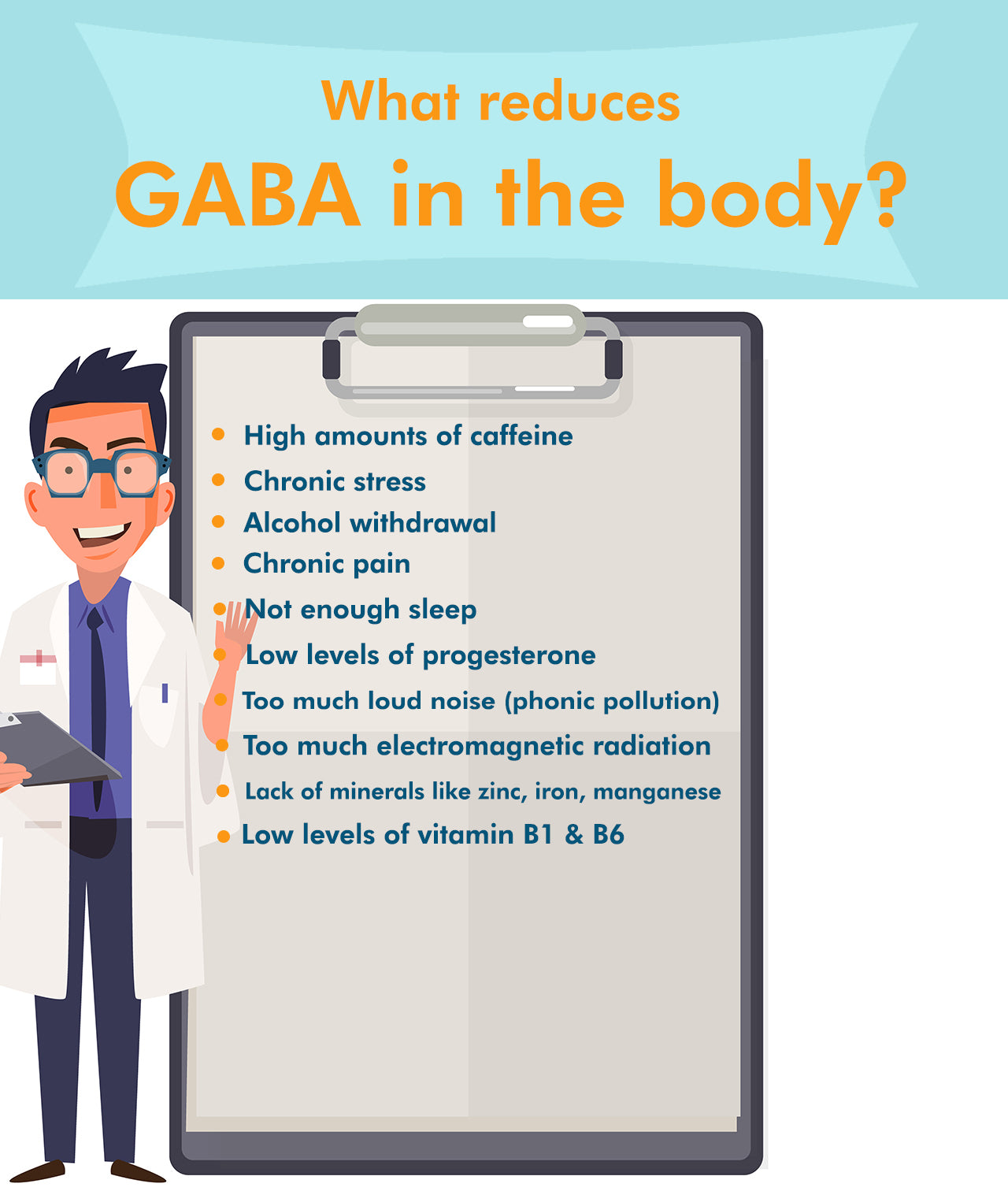Yoga and the Brain: How Yoga Can Boost GABA Levels
 By: by Amino Science
By: by Amino Science

A good yoga class can leave you feeling relaxed, focused, and completely Zen. Practicing this 10,000-year-old form of exercise can increase your flexibility, muscle strength, and energy, but did you know downward-facing dog and other yoga poses can positively affect your brain chemistry too? Turns out yoga and the brain make great mind-body pals. Researchers have found that practicing yoga may boost brain gamma-aminobutyric (GABA) levels, your brain’s primary inhibitory neurotransmitter.
What Is GABA?
If the only GABA you've ever heard of is Yo Gabba Gabba, don’t feel discouraged. The GABA in your brain isn’t as well-known as its fellow chemicals serotonin and dopamine, but it is just as important.
Naturally occurring brain chemicals called neurotransmitters send messages from nerve cell to nerve cell. Gamma-aminobutryic acid, or GABA, is the “downer” neurotransmitter that regulates many of the depressive and sedative actions in your brain tissue.
GABA is critical for relaxation and is thought to reduce feelings of anxiety and fear by decreasing neuronal excitability. In other words, it helps to chill you out and hits the brakes on an overactive and unruly mind. This chemical is vital to the healthy function of your nervous system and plays a big role in helping you unwind in the evening and allowing you to transition to sleep.
People with depression and anxiety have been shown to have low amounts of GABA, and medicines often used to treat these disorders increase GABA levels. A dip in this chemical has also been noted in people who have survived a distressing event or have been diagnosed with post-traumatic stress disorder. Scientists have also noted up to 30% less GABA in those who suffer from insomnia.

The Brain Benefits of Yoga
Lifestyle practices that combine breathing, stretching, and relaxation, like yoga, have been shown to positively impact GABA receptors and may offer a natural way for you to balance the chemicals in your brain.
A 2007 study found that practicing yoga postures increased levels of GABA in the brain. A group of experienced yoga practitioners showed a 27% increase in GABA after 1 hour, compared to the group who sat and read for an hour. Those in the group who were new to yoga had a 13% GABA boost over a 12-week period. Researchers concluded that while subjects can be trained to practice yoga in a relatively short time with a measurable effect, the associated change in GABA levels may increase with experience.

Another related study examined the effects of yoga on mood, anxiety, and brain GABA levels compared to the effects of walking. Findings revealed that practicing yoga did increase GABA, and the yogis reported a greater improvement in their moods and a drop in their anxiety levels. The 12-week yoga intervention was the first study of its kind to show that an increase in GABA levels is tied to improved mood and decreased anxiety.
The results of both studies have prompted further research into yoga as a possible treatment for depression and anxiety disorders associated with low GABA levels. It has yet to be determined if yoga is the most effective activity or if other physical activities offer the same results.
Get a Natural Serotonin Boost
On top of boosting GABA levels, yoga helps release serotonin naturally. Serotonin controls your mood and social behavior, appetite and digestion, sleep patterns, and overall state of well-being. Serotonin levels increase while you are concentrating on breathing and putting your focus on mindfully being in the moment. Plus, the areas of the brain that respond to stress and send out hormones in response to such stressors are deactivated during this time.
Double the Impact with Meditation
Yoga and meditation also increase activity in the happiness-producing regions of the brain—the left prefrontal cortex—and help subdue the stress response. As you go into lotus position, you reduce stress hormones and increase “feel-good” endorphins, an effect coined the “yoga high.” The pituitary gland in the brain releases these endorphins, which then attach to receptors within the central nervous system. This binding of endorphins to receptors activates a reaction that blocks the brain from receiving messages of pain. With this blockage, chemicals that trigger swelling and inflammation are stalled.
The deep breathing of yoga and meditation greatly influence the hypothalamic-pituitary adrenal axis (HPA axis) formed by the hyphothalamus, the pituitary gland, and the adrenal glands. The HPA axis is in charge of the sympathetic nervous system that directs the fight-or-flight response and the parasympathetic nervous system that helps you relax. Yoga and meditation can help calm SNS activity and stimulate PNS activity. Not only does you mind calm, but your heart rate and blood pressure lower in response.
Anti-Aging Exercise for the Brain
Turns out the physical practice of yoga is also a mnemonic. Adults older than 55 with mild cognitive impairment participated in Kundalini yoga or memory training for 12 weeks. Memory gains were achieved in both groups, but individuals practicing yoga also showed greater gains in executive functioning skills and emotional resilience. Researchers suspect that the chanting involved in certain types of yoga such as Kundalini and Hatha yoga may help bolster verbal and visual abilities.
We've already seen how yoga and meditation can affect the brain in similar ways, and we can look to meditation studies to provide further explanation for yoga's beneficial impact on brain function. Mediation has been shown to cause alterations to brain regions responsible for attention, self-awareness, and self-related thinking, as well as more gray matter density. Greater gray matter volume is associated with increased intelligence.
Overall, this ancient practice, as well as additional meditation practices, has been shown to have a huge impact on both mental and physical well-being. So, does becoming a yogi produce great GABA gains and fortify your brain against the ravages of age? It might be worth a try. Grab your yoga mat and go! Take Amino Co's athletic performance blend Perform with you for extra endurance!

Up to 25% off Amino
Shop NowTAGS: anti-aging natural cures
Join the Community
Comments (0)
Most Craveable Recipes




 833-264-6620
833-264-6620



















